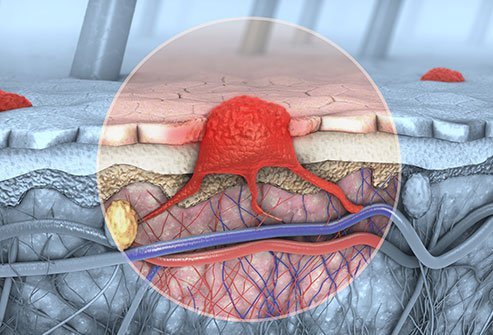What Do the Early Stages of Skin Cancer Look Like?
What is skin cancer?
Skin cancer refers to the uncontrolled growth of cells in the skin. Skin cancer is the commonest type of cancer in the United States. Your skin acts as a protective barrier containing several types of cells. Depending on the cell from which skin cancer originates, it can be of several types. The most common types of skin cancers are basal cell carcinoma and squamous cell carcinoma. These two types of skin cancers are highly curable unlike the third most common skin cancer called melanoma. Melanoma is the most dangerous skin cancer that causes many deaths. Even curable skin cancers can cause significant disfigurement. Other types of skin cancers include lymphoma of the skin, Kaposi sarcoma, and Merkel cell skin cancer. Knowing the type of skin cancer is crucial for the doctor to decide treatment.
What do the early stages of skin cancer look like?
Almost all skin cancers are treatable when diagnosed early. Thus, it is important to recognize the early signs of skin cancer and seek timely medical attention. Signs of skin cancer may appear anywhere on your body depending on the site affected. Skin cancer can be detected quite easily since you can see the changes occurring on your skin. Sometimes skin cancer may arise at relatively concealed places, such as inside your mouth, around your genitals, or under a nail. Thus, you must examine yourself thoroughly, preferably in front of a mirror, to look for any signs that may indicate skin cancer, such as:
- New growth on the skin
- An old mole that appears to be enlarged or a new mole that looks different from others
- A rough or scaly patch on the skin
- A nonhealing ulcer or sore or one that keeps coming back
- A mole or spot that has an irregular shape or appearance
- A skin patch or mole with an uneven color
- A brown or black streak under a nail
- A skin patch that itches or bleeds
- A skin patch or growth that is increasing in size
Examination of your skin, mouth, and nails may be done monthly. If you have a history of skin cancer, your doctor may ask you to examine it more frequently. You may take the help of your partner or a family member for examining the areas that are difficult to see, such as the buttocks and the back. Any suspicious-looking area must be brought to the doctor’s attention. It may not be skin cancer, but early diagnosis is important for managing the condition more effectively.
Who is at risk of getting skin cancer?
Skin cancer can affect anyone. Excessive exposure to ultraviolet or UV rays is regarded as the most important cause of skin cancer. Certain conditions may increase your risk of getting skin cancer. They include:
- Having a light skin complexion
- Having blue or green eyes
- A skin that has a tendency to get burns, freckles, redness, or becomes painful on sun exposure
- Having natural blond or red hair
- Having many moles of certain types
- Having a personal or family history of skin cancer (skin cancer in grandparents, parents, siblings, or children)
- Older age
- Using tanning parlors

